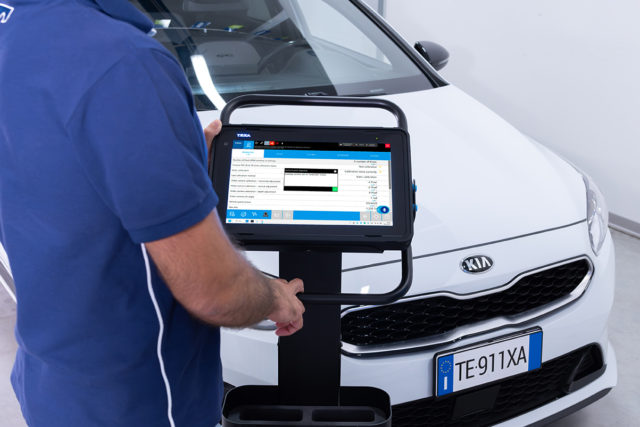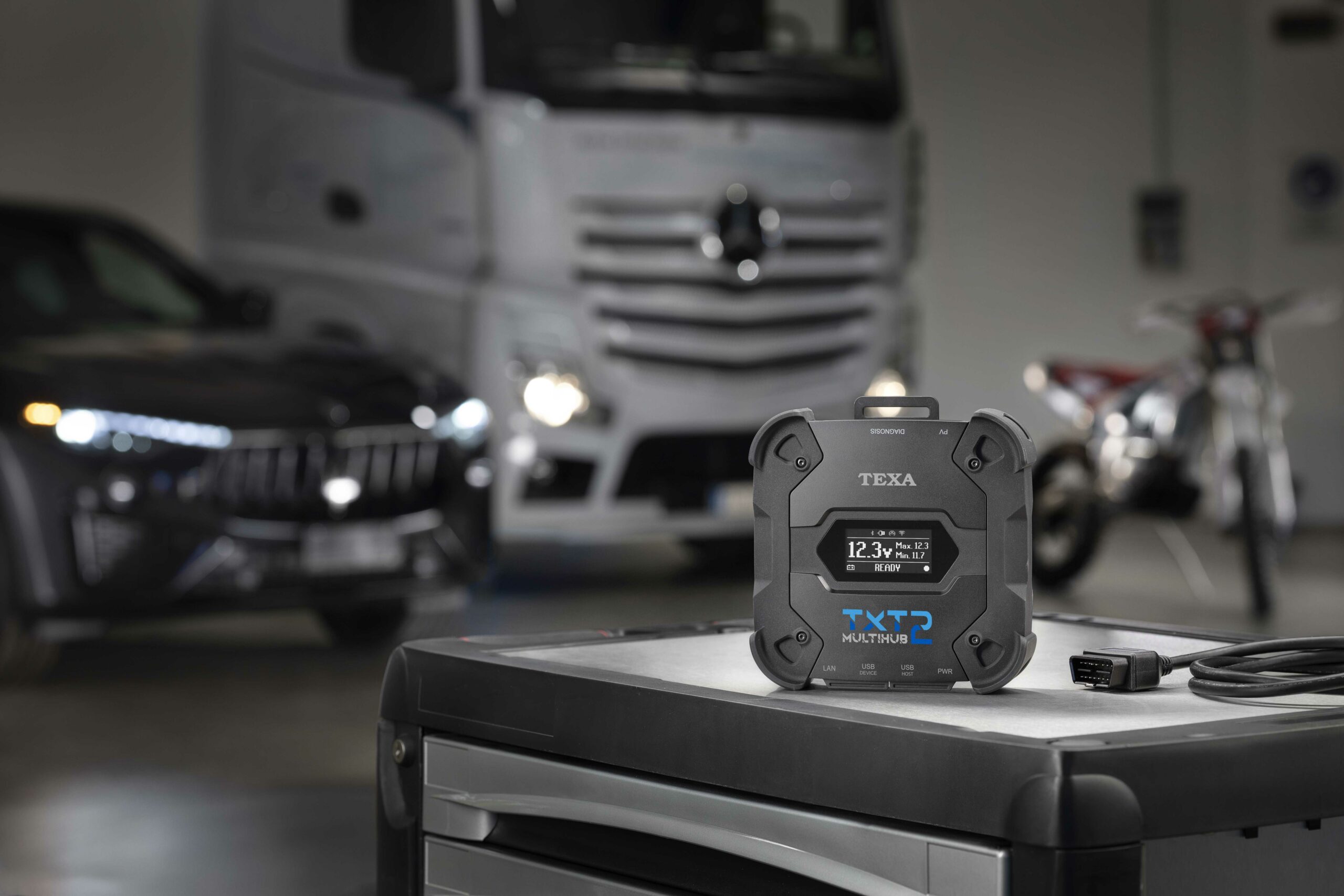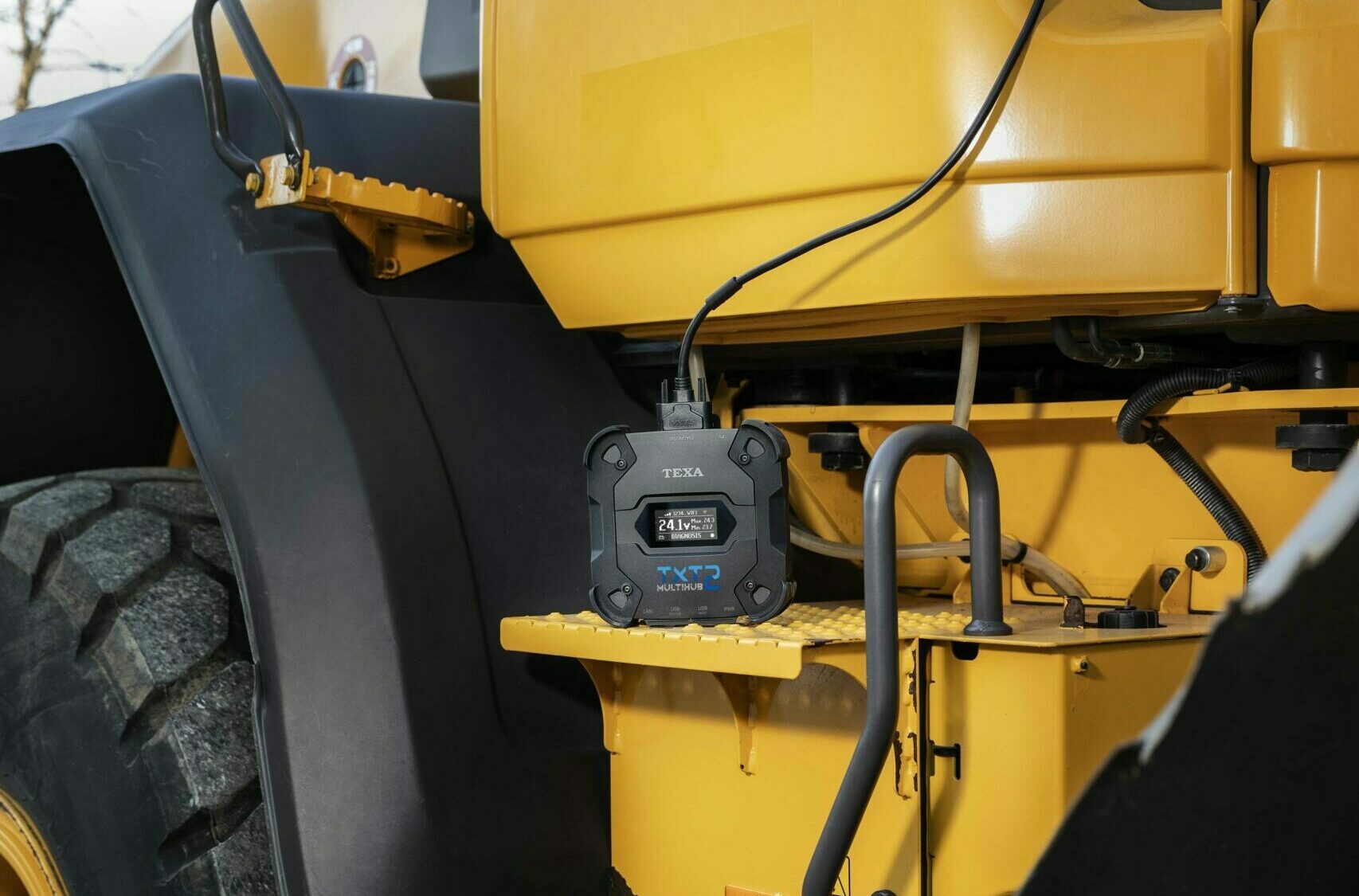Discover Navigator
TXT MULTIHUB 2
The top-of-the-range solution versatile, quick, intuitive, in any situation
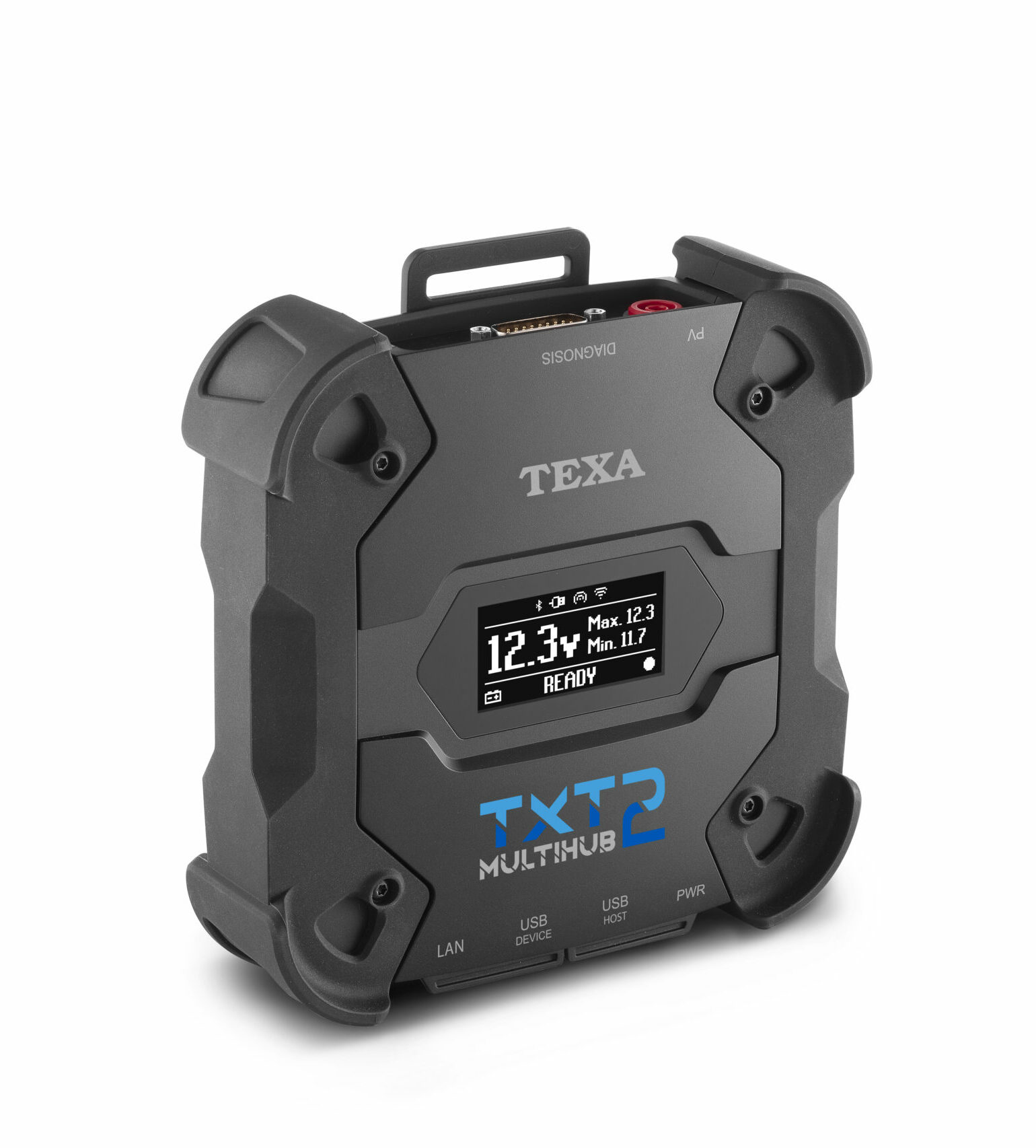
Multibrand diagnostics by TEXA
In recent years, the diffusion of electronics on board vehicles has been exponential and has reached a very high level of complexity. Today repair specialists must be capable of working at their best on different types of vehicles, with different diagnostic protocols and multiple connection modes.
A unique tool, for all the environments
TXT MULTIHUB 2 is the only diagnostic tool capable of intervening on cars, heavy-duty vehicles, motorcycles, boats, agricultural and construction vehicles. At all times it guarantees unparalleled performances so to complete operations the best way possible, with maximum customer satisfaction.
Great usability, thanks to the built-in display
TXT MULTIHUB 2 is equipped with a practical 2.42-inch, white-backlit display that gives it great usability and the possibility to view the information based on three types of messages:
- communication mode with the display unit
- charging voltage of the battery in the vehicle it is connected to
- operating status that can be standard diagnosis, DoIP Wi-Fi, DoIP Ethernet, Pass-Thru, CAN-FD.
Battery voltage at a glance
Robust, practical, handy a “rugged tool” perfect in any situation
TXT MULTIHUB 2 is equipped with a special reinforced body with anti-shock corners. Its certified protection level is IP53, therefore it resists splashes of water and dust.
"No limits" connectivity

Built-in DoIP, even wireless
TXT MULTIHUB 2 allows easily performing the diagnosis on vehicles equipped with DoIP (Diagnostic over Internet Protocol) technology, even in Wi-Fi. This standard, developed to manage the massive presence of electronics in vehicles and the impressive mass of elaborated diagnostic data, requires using a connection based on the IP protocol.
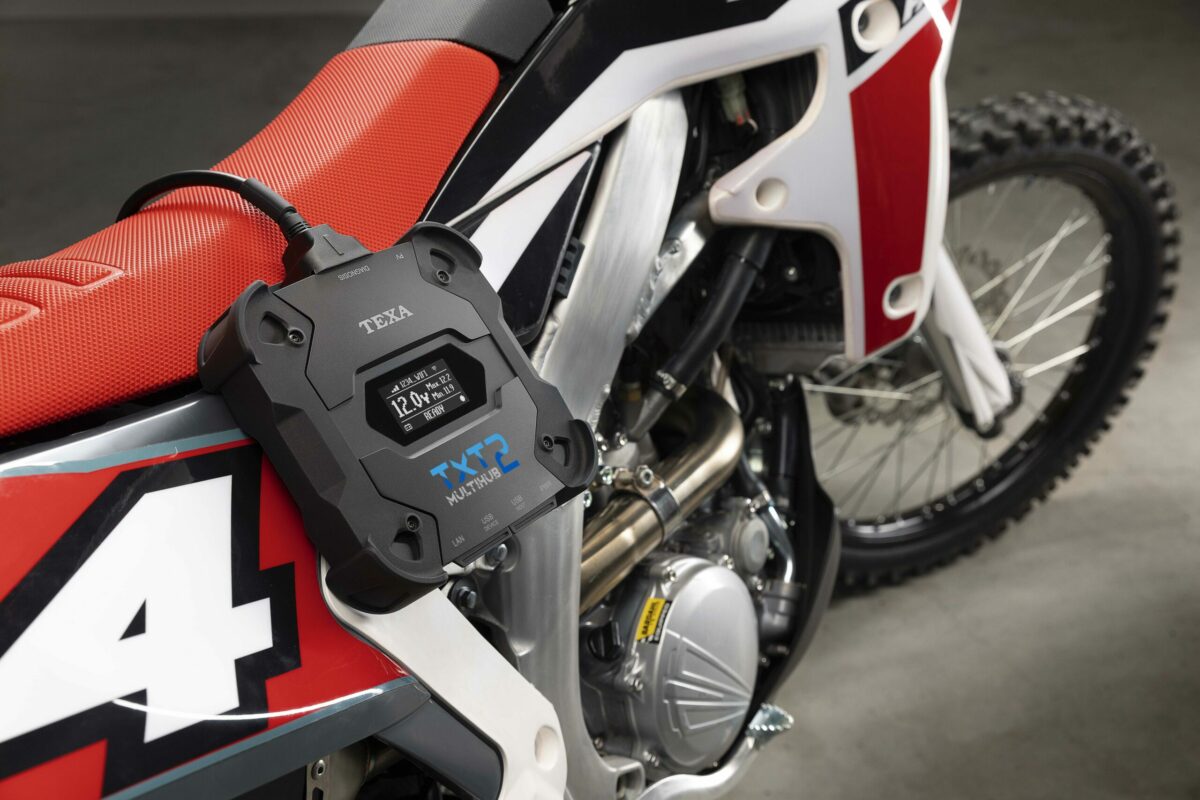
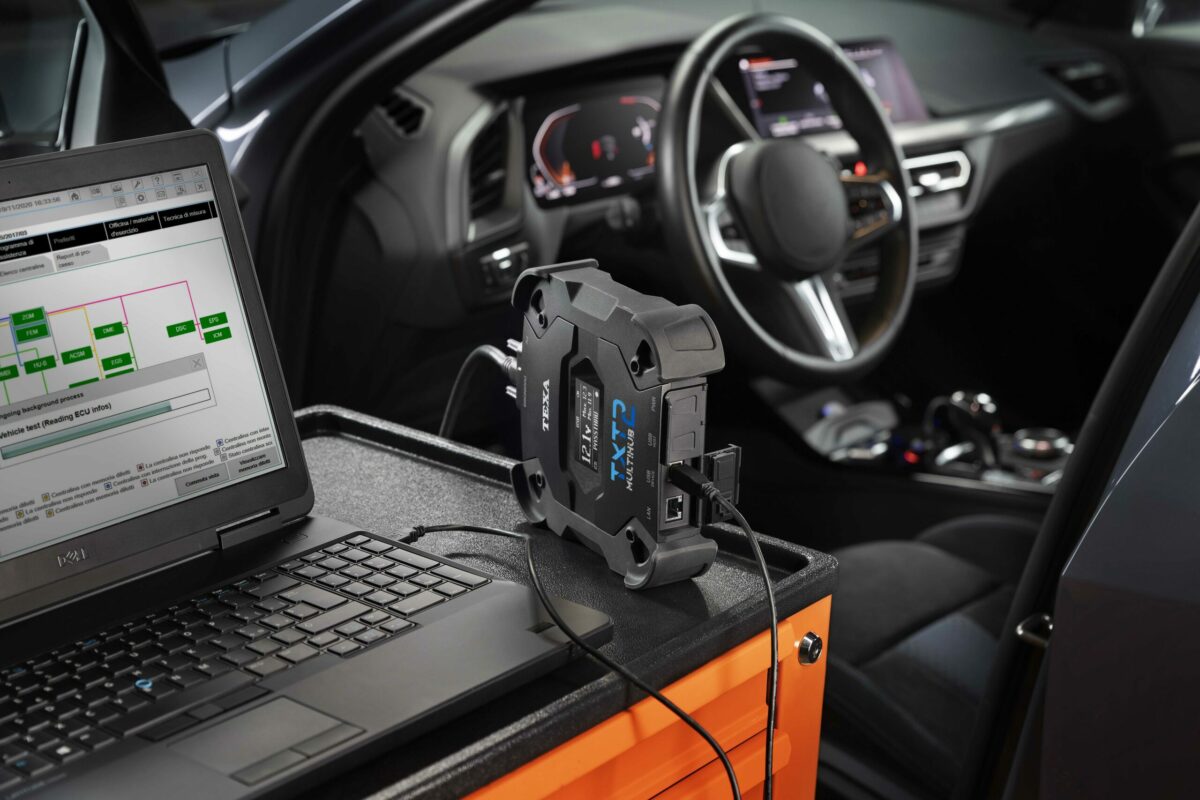
Pass-Thru, direct access to the manufacturers’ data
TXT MULTIHUB 2, as already stated, is ready to operate in any configuration, even passing from a standard diagnosis to Pass-Thru in a completely automatic way. It is compliant with the SAE J2534-1 and SAE J2534-2 regulations, therefore it can connect to a vehicle and provide direct access to maintenance and diagnostic data made available by the vehicle manufactures and essential, for example, to update the software in one or more control units.
CAN FD, for high-intensity data transmission
The CAN FD (Controller Area Network Flexible Data-Rate) protocol allows transferring information, even largesized, five times quicker. With TXT MULTIHUB 2 even managing this communication standard (4 channels) is easy and intuitive.
Technical features
Main processor:
• Type: iMX6 1 GHz
• DDR3L SDRAM: 512 MByte
• Mass Storage: eMMC 8 GByte
Coprocessor:
• Type: STM32H735IGK6 550MHz
• RAM: 2 MByte SRAM, 32 MByte SDRAM
• Flash: 2 MByte
Power supply connector: PWR: 2.1 DC jack
Power supply: 12 – 24 V (direct voltage)
(from vehicle battery via OBD connector or specific
wirings)
Consumption: 1 A @12 V
0.5 A @24 V
USB connectors:
• USB: USB 2.0 host type A max 1 A out
• USB DEVICE: USB 2.0 device type B (priority connector)
Bluetooth communication: BDR/EDR/LE1M
Wi-Fi communication: WiFi IEEE 802.11 b/g/n20 (2412 ~ 2462 MHz)
Operational band: 2400 ~ 2483,5 MHz
Maximum radio frequency power transmitted: 10 dBm (2400 ÷ 2483,5 MHz)
Diagnostic connectors: DIAGNOSIS: DSUB-26HD (ISO 22900-1)
Electronic switch: 2-way, 13 independent positions
Control units reprogramming connector: PV (SAE J2534-1)
Supported protocols:
• Blink codes
• K, L (with 100 mA current protection), ISO9141-2, ISO14230
• CAN ISO11898-2 High Speed
• CAN_FD 11898-2:2016 4 channels
• CAN ISO 11898-3 LOW Speed
• CAN SAE J2411 Single Wire
• SAE J1850 PWM
• SAE J1850 VPW
• SAE J2534-1
• SAE J1708
User interface: Display OLED 64×128 dot
Operating temperature: 0 ÷ 50 °C
Storage temperature: – 20 ÷ 60 °C
Operating moisture: 10% ÷ 80% without condensation
Weight: 600 g
IP protection level: IP53 (With properly closed protective caps)
Directives:
• RED 2014/53/EU
• RoHS 2011/65/EU and Delegated Directive 2015/863/EU
Electromagnetic compatibility:
• ETSI EN 301 489-1
• ETSI EN 301 489-17
Radio systems: ETSI EN 300 328
Electrical safety: EN 62368

